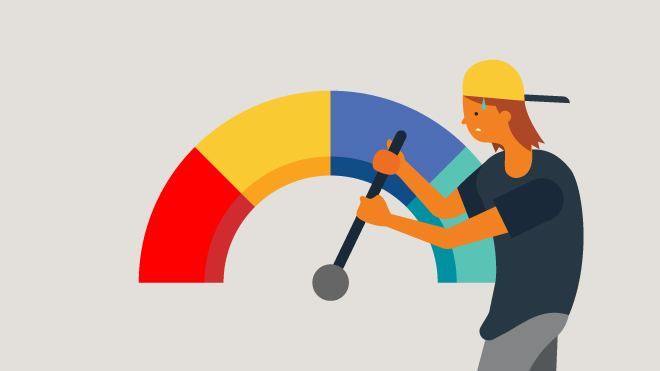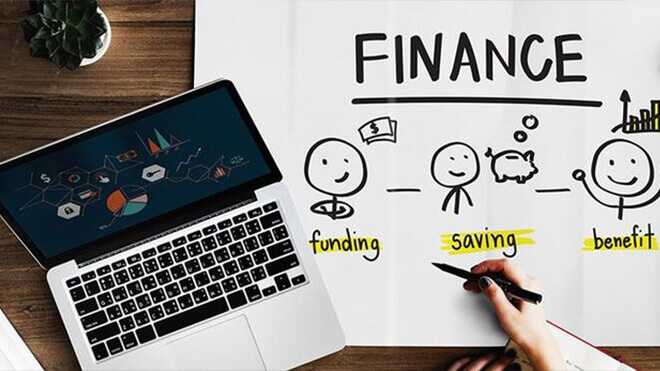
12 New Year Financial Resolutions for 2024
Make financial resolutions you can stick to and learn the specific actions you can take to achieve each one.
New Year's resolutions often focus on physical health, but financial health is important, too.
The key to any resolution is making sure you can stick to it. Research shows that creating an "approach-oriented" goal is more successful for resolution-makers than an avoidance-oriented goal. Approach-oriented goals involve hitting desired goals and outcomes. Avoidance-oriented goals focus on avoiding undesirable outcomes. An example of an approach-oriented goal would be committing to paying down debt according to a debt-reduction strategy you choose. An avoidance-oriented goal would be just to get out of debt.
With that in mind, we put together a list of financial New Year's resolutions and actions you can take to help you improve your financial life. These resolutions are in priority order to help you cover the essentials first.
Work your way through our recommended personal finance actions, and by the end of the year, you'll be closer to achieving your financial goals.
1. Start a Budget (or Fine-Tune Your Budget)
Choose a Budget Strategy
Maybe you prefer a general approach, like the 60% Solution, where you reserve 60% of your money for committed expenses, 30% for savings and 10% for fun. Or maybe the 50/30/20 budget plan is your style — 50% for needs, 30% for wants and 20% for savings and debt.
Remember that it doesn't have to be perfect, and you can change strategies if the one you choose isn't working for you.
Get started by understanding your spending habits. Look back at where you spent money the past few months and track your current spending with a spending journal. Compare your outgoing money to your income.
BECU's Better Budgeting tool is one helpful resource.
Budgeting Apps
Budgeting apps can help you track your spending and progress toward goals. The easy-to-use budgeting app Mint was discontinued— but BECU's free Money Manager might be a great alternative.
Research what works for you. You want to end each month knowing where your money went and not feeling surprised or overwhelmed when you check your account balances. This can be tough as we increasingly budget with inflation in mind.
2. Build Your Emergency Fund
Create an Automatic Savings Transfer
Your emergency fund helps with unexpected expenses — whether that's paying medical bills, fixing your car or being laid off. If you have a financial safety net, you won't need to run up a credit card and end up paying interest.
Your emergency fund should generally contain three to six months of expenses. Make sure you put your growing stash of cash in an FDIC- or NCUA-insured savings account.
Set up an automatic savings transfer that sends cash to the account with every paycheck or once monthly. It's okay to start small and increase amounts as you go.
3. Reduce Your Debt
List Debts and Choose a Strategy To Repay Them
Debt can affect your life in many ways, including whether you will be approved for a personal loan, credit card or mortgage, and the interest rate you will pay.
Paying interest monthly also depletes the cash for saving and spending on things you enjoy.
Add up your total debts, including:
- Credit cards.
- Student loans.
- Auto and other vehicle loans.
- Mortgages and HELOCs.
- Medical debt.
Review your total debt amount and investigate different methods for paying down debt: debt snowball, debt avalanche or debt cascade. There isn't a one-size-fits-all solution. Choose the strategy that is most motivating to you.
If you find it challenging to take this step, BECU members can make an appointment with BECU's Financial Health Check program.
4. Find Better Interest Rates on Credit Card Debt and Loans
Check Rates on Credit Cards, Mortgage and Other Loans Before You Apply
Interest rates, in general, have been climbing, so the new year is a good time to review. You may be paying too much for your borrowed money, particularly if you haven't checked rates in a while.
Credit unions generally offer lending rates that are lower than the average found at banks.
You can also look into consolidating your debts with a lower-interest personal loan or find a credit card with more competitive rates — but do so with caution. Consolidating debt in one area can sometimes lead to more debt in another area. Make sure you address your spending habits, and you can cover your expenses without adding to your debt before you consolidate.
5. Improve Your Credit Score
Check Your Score Once a Month
The first step to improving your credit score is checking your score. An excellent credit score can help you get better rates on loans.
Credit card companies and lenders often share credit scores with their customers. BECU members, for example, can check their credit scores by logging into their accounts online.
You can also use annualcreditreport.com to check your credit report for free.
Checking your credit score once a month or so is a good idea — as is understanding why your score might go up or why your score might drop. Different factors influence your ever-changing credit score. Taking steps to improve it might involve reducing debt, making on-time payments, or limiting new credit accounts. But watching your credit score change and improve can encourage your efforts. Checking your own credit score or credit report doesn't lower your credit score.
6. Save for 2024's Big Expenses
Estimate Recurring and Occasional Expenses and Start Saving
Right after the holidays is an excellent time to review significant expenses that happen every year. Perhaps you charged these to a credit card or now find yourself short on cash in January.
Big expenses you might plan for include:
- Holidays.
- Birthdays.
- Vacations.
- Taxes.
- Insurance payments.
- Donations.
Look through 2023's expenses to get an idea of how much you might spend on the same expenses in 2024. Divide the estimated total by 12 to see how much you should save monthly and make this part of your budget.
Open a new savings account or categorize your savings with our digital tool, BECU Envelopes. Set up automatic transfers each month so you know the money will be here when you need it.
7. Make a Plan To Save for Big Future Purchases
Estimate Costs, Then Compare Savings vs. CD
Estimate the cost of big purchases you want to make in the next few years such as buying a car, paying for college or moving to a new town.
Then, compare methods and rates for saving for your big purchases. Because these are not immediate, urgent expenses, research CDs vs. savings account alternatives. For example, a certificate of deposit (CD) could earn you a far higher interest rate in exchange for locking up your cash for a set amount of time.
8. Update Your Retirement Plan
Check Retirement Balances and Make an Appointment for a Check-Up
Are you on track for retirement? Total your retirement balances in IRAs, 401ks, projected Social Security benefits and pension funds. You can use free online retirement planning tools like the U.S. Department of Labor's worksheet, which estimates how much you should save.
For a more thorough check-up, consider making an appointment with a personal financial advisor to review your strategy. The planner can help update you on what's new in 2024 or show you new ways to save. For example, those 50 and older can put extra money into retirement annually, called "Catch-Up Contributions."
9. Plan for a Future Home Purchase (or Remodel)
Estimate Purchase or Construction Costs and Compare Loan Options
Whether you want a new house or just a new kitchen, you likely know that home purchases and updates are expensive. With some planning, you can take advantage of tax deductions, government programs and better interest rates.
If it's your first time buying a home, research any first-time buyer programs available to you and compare requirements and costs.
Where structural upgrades are concerned, energy-efficient updates may qualify you for tax credits. Overall, credit unions offer lower interest rates than banks for home mortgage refinancing, HELOCs, and home improvement loans.
If you want to do a less-expensive home makeover, you could also use a personal line of credit or a personal loan to accomplish your goals. Compare rates, terms, repayment options, collateral required and other features.
10. Start (or Update) Your Estate Plan
Review and Update Bank Account Beneficiaries
Your estate is the property you leave behind after passing away. You don't have to be wealthy to have an estate. It can simply be what's in your checking, CD and savings accounts, or any retirement or pension accounts.
List and review your accounts as a first step. Check who the beneficiaries are on each account — the people you've named to receive your account funds after you pass away.
You may need to complete paperwork or an online form to update the recipients.
If you're ready to learn more, start delving into estate planning with a professional — including how wills and trusts work.
11. Review Your Insurance Costs and Coverage
Add Up Costs and Coverage, Then Compare With Other Policies
Review your insurance, including your coverage, premiums and deductions to make sure you are comparing "apples to apples" when you are looking at different policies. Depending on your situation, this might include:
- Auto insurance.
- Homeowners insurance.
- Renters insurance.
- Small business insurance.
- Health insurance.
- Life insurance.
Set an appointment with yourself for online research or call an independent agent (who has access to multiple plans) to investigate alternatives. You may be over-insured or underinsured or paying too much for what you're getting in return.
For example, you may be able to lower your premium (monthly or annual payment) by increasing your deductible. Just make sure you are prepared to pay a larger out-of-pocket expense if you have a claim. You can also inquire about other discounts, such as a lower cost for paying your premium in one lump sum instead of monthly, or a safe-driver discount.
12. Increase Security on Your Financial Accounts
Update Passwords
Your hard-earned cash deserves a safe home. Fraud, scams and hacks can all drain your bank accounts. Financial institutions take many steps to secure your accounts and your funds are insured for up to $250,000 through FDIC or NCUA insurance. But it's also up to you to help keep logins and passwords safe.
Review your logins and change passwords if you haven't done so during the last six months. Be sure not to share logins and passwords with others, and stay ahead of any new scams and phishing attempts.
Plan for Next Year
Once you've taken steps to follow through on your financial New Year's resolutions, it's time to celebrate — then start the planning process again for next year. Note anything you postponed or procrastinated on until the end of the year. Also note items you found difficult to achieve: What were the barriers, and what might you do differently the next year?
For example, you might notice that you rushed to make year-end donations. But you can set up charitable giving to donate year-round.
With a little practice and consistent effort, you'll have stronger money muscles and be closer to achieving your goals.


